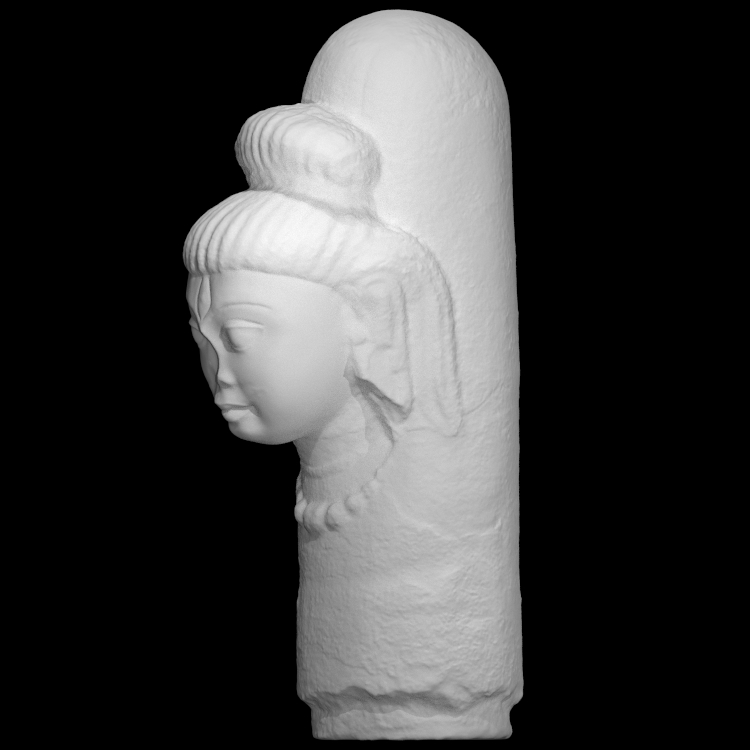
Shiva Ekamukhalinga
myminifactory
Shiva's manifestations abound, yet he is primarily worshipped in his linga or phallus form, which embodies his primordial creative power. From its earliest appearance around the 1st century BCE at Aghapur and Gudimallam, the linga shaft with Shiva in anthropomorphic form stood as the dominant early representation. In this depiction, Shiva's head emerges from the linga shaft, clearly visible with his third eye, while he sports a moustache and wears a rudraksa mala necklace made from sacred tree stones. His uncut hair is piled high in yogic ascetic style, with additional locks cascading down behind his ears. A linga of this scale could have served as the cult image for a Saivite temple, few of which remain intact from the Gupta period. The distinctive pink sandstone suggests that it originated from the Mathura region. Representations of deities emerging from tree trunks appeared in 1st century BCE Sunga and Satavahana art, reflecting shared concepts of divine presence in nature and the manifestation of godhood in anthropomorphic form. Tree-post-pillar symbolism linking earth and sky was widespread in early Indian religious thought, likely contributing to the pillar's central motif status with or without explicit phallic connotations. The linga, meaning "sign," became Shiva's most powerful icon, with all others being subsidiary. Gallery location: South-East Asia, Room 47b, case BNC, shelf 3 Courtesy of the Victoria and Albert Museum, London
With this file you will be able to print Shiva Ekamukhalinga with your 3D printer. Click on the button and save the file on your computer to work, edit or customize your design. You can also find more 3D designs for printers on Shiva Ekamukhalinga.
